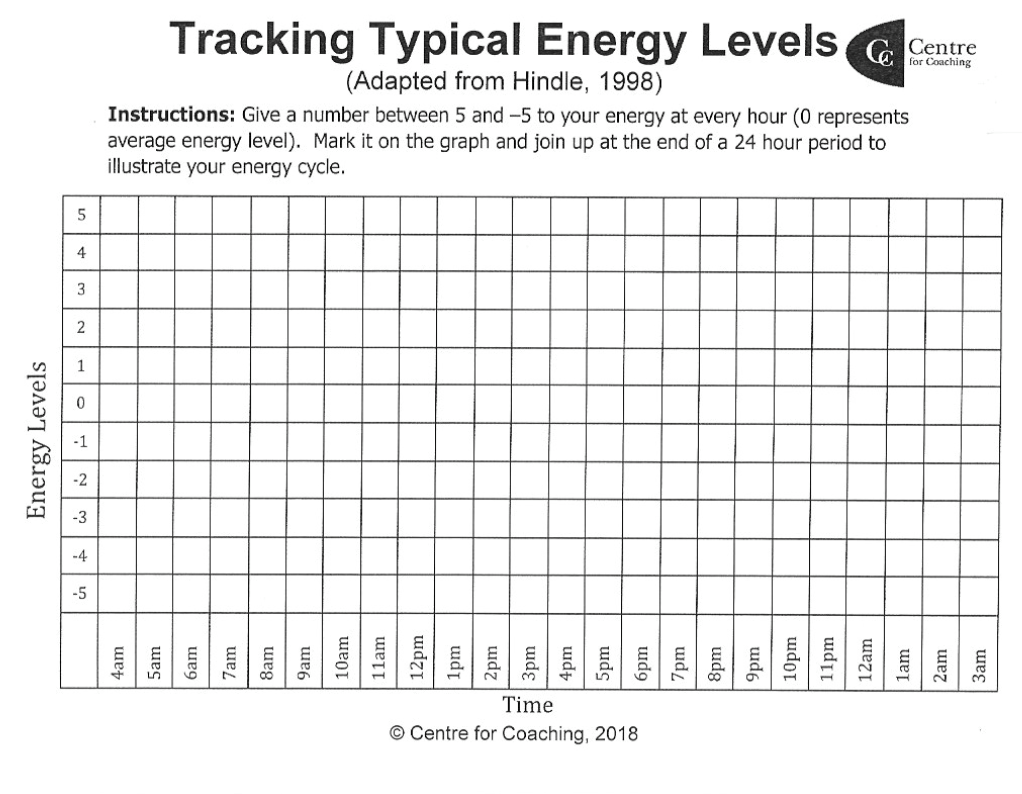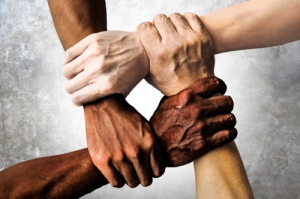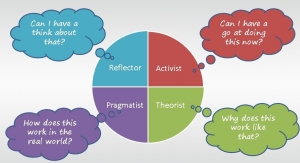
Christine Dawood
Why being non-racist is no longer enough
Just like most of us, I’m part of a number of WhatsApp and Facebook groups. Some are work related, some I joined because of common interests. When one country after the other went into lockdown, the topic most discussed was obviously Covid-19. The amount of support people were offering each other was heart-warming, be it getting groceries for the more vulnerable amongst us, stitching scrubs and clapping for NHS workers, or simply offering a comforting word. It was, in short, communities coming together in a crisis and making the best of it.
Together.
Then came US Memorial Day, and a horrendous video of a police officer killing an African American man went viral.
The riots and demonstrations started the very next day.
What began as a local outcry for justice became a national topic and is now a global movement. Influenced by a long history of civil rights campaigns, #BlackLivesMatter, or BLM, as the media often refers to it, first appeared in the USA in 2013, and has now gained momentum across Europe and other continents.
And it’s here to stay.
My various groups started to discuss racism and discrimination in general. It’s a topic that had often been tiptoed around as it was too ‘sensitive’ to really ‘go into’. And the voices were loud and plenty. As if a floodgate had been opened, people were sharing their stories. Some were subtle like being stared at on public transport or in shops, while others were outright scary. From being ‘randomly selected’ for a body search at the airport to being called names I don’t want to repeat or being physically assaulted. Story after story appeared and the knot in my stomach grew.
It’s not that I didn’t know that these things were happening, but I am embarrassed to admit that I was making myself blind to it. Not consciously, but more like a bird up in the trees, enjoying the beautiful view, the sunlight and the freedom – breathing – without really looking down into the undergrowth.
It was during one of these discussions – and by now I was actively participating – when I got a private message from a friend announcing that he no longer wanted to be part of the group. After inquiring why, he simply said that “there wasn’t room for others to think differently”.
I’d like you to sit with this sentence for a bit.
“There wasn’t room for others to think differently”.
All those voices, stories and hardship were reduced to “one-way thinking”. I was absolutely stunned and truly lost for words. He ended his message by asking for “my forgiveness”. What was I supposed to forgive? His ignorance? His lack of understanding or empathy? His contradictory statement? I still don’t know.
From there onwards, more people started to drop out from various groups because they were just “not doing it” for them anymore. And I started to wonder.
I grew up in a beautiful and picturesque part of Germany, and it was very easy to be non-racist. Simply because there were no other people from different races. The closest I would get to a person of colour was Michael Jackson in a concert. It took meeting my future husband for me to realise in what kind of bubble I had been living.
He is a wonderful man and we have two gorgeous children together and yet I have had to justify my choice of spouse many times over the years simply because of his skin colour. Why? Why is his darker tone the determining factor as supposed to him being an honest, loving and funny person? At first, I tried to explain, to justify but then I got exhausted of explaining and kept quiet.
Although silence can be really powerful, as Marina Abramovic demonstrated with her performing arts piece in which two people sit across from one another without a single word spoken. Here, silence becomes a new mode of communication, a context for observation and, crucially, self-reflection. The latter being the key. One needs quiet to self-reflect. But it can become an excuse.
By being silent you decide to give voice to those who speak. By not voting you support the current government. By inaction you choose the status quo.
Silence is consent.
The pendulum has been pulled too far to one side and in order for it to even out, it needs a push to the other. Let’s do it together.
Don’t be silent. Being non-racist isn’t enough anymore.
We have to be anti-racist.
Creating Memories
Almost every coaching model focuses on goals in some form. It’s all about reaching, meeting or achieving ‘it’. Goals can vary, of course: ‘I want to be able to give this presentation’, ‘I want to lose five pounds’ or ‘I will not be on my phone in bed at least once a week’. Once you know what you want, the next step is to find ways to make it happen. Without an aim it seems, there’s no coaching.
So, when, on a beautiful autumn afternoon, my husband asked me to join him for a walk, I immediately went into goal mode. I could achieve at least 4,000 steps and as we only had about an hour and a half until sunset I was eager to get going.
This was the perfect SMART goal.
Specific: 4,000 steps (or more)
Measurable: My watch counts for me (blessed be technology)
Achievable: Yes
Realistic: Absolutely
Timely: I had one and a half hours, so yes
With my goal firmly in place, we set off. It was a treat for the senses. The colourful leaves were crisp under our boots and rustled with each step. Beams of light broke through the thicket giving us a stunning interplay of light and dark. It was still quite warm despite the late season, so there was no need for a jacket, what a luxury! However, not even 10 minutes in – I was just getting into my rhythm – my husband stopped and took a picture of what, to my mind, was a random bush. I waited, eager to continue, but he took another, and then another.
I looked at my watch, not even 300 steps yet! Maybe I should just walk on the spot? He finally joined me again and we continued in silence, both lost in our thoughts. Five minutes later, same thing, him taking pictures, me waiting. This pattern continued for at least another half an hour until I grew increasingly frustrated – his behaviour was threatening my goal.
When I couldn’t hold it in any longer, I asked him why he wanted to go for a walk with me if all he wanted to do was non-walking and taking pictures. He shrugged, “I just want to spend some time with my wife.”
Albeit touched, I was not satisfied with his answer, I continued walking without him and completed my 4,000 steps. But by now I was feeling a bit guilty. After all, if it hadn’t been for him I wouldn’t be out right now at all. So, I waited, and while I did so I started to notice the small things around me. A squirrel rushing up a tree, a single flower on an otherwise wilting rosebush and a small golden bell shining right next to my boot – it must have fallen from an animal’s collar. I nudged it and the movement made it jingle. A cute sound that made me smile.
My husband was still nowhere to be seen but I didn’t mind waiting because I finally understood what he’d meant. The present is sometimes more important than working towards a goal in the future. Both have their place and time, and it’s the balance between them that’s important. Without goals, we might lose purpose but without stopping we might not enjoy an achievement that was once a goal.
With a shake of my head, I got out my phone and started taking pictures – of random bushes and interesting objects. I still have them and whenever I feel I’m off track I look at them and smile because I realise that my husband had a goal too that afternoon, one that might not be SMART but one that’s invaluable: creating memories.
Stuck in Karachi
Stuck in Karachi
It was during the training on occupational health I was giving when I noticed an increase in distraction amongst the participants. Almost everybody was looking at their phone with different intensity of worried in their gaze. As a trainer, there is nothing worse than to lose your audience and I was on the brink of telling myself that I must be a pretty bad trainer that nobody is paying attention.
Interestingly my next slide was on ‘stress at the workplace’ and while I cleared my throat to explain the content one of the participants spoke up. “We are already quite stressed right now, India has invaded our airspace and got shot down.”
I was stunned.
Mainly because I knew the possible consequences. This could mean war and it could get ugly. Really ugly.
We all took a moment and contemplated in silence, contemplating what this could mean to all of us. It was an hour later that Pakistan’s airspace was closed and no flights were coming in nor out. I was officially stuck.
It was then that I learned to respect people’s resilience even more. We had a chat about how such a situation could possibly (yes, the people used the word possibly) be a stressor for work but we quickly came back to the topic and hand and proceeded the workshop as planned.
When I met up with some friends for dinner everybody told me to freak out and I said to them, “I’m not!” they looked at me, nodded in acknowledgment and the topic was closed.
That made me smile because it’s true, I’m not stressed out. I can’t deny that this isn’t how I envisioned my stay and that I'm not worried about the situation, but my children are safe with their father in the UK and I have a home here. People I love.
I might be stuck in Karachi until they decide to open up the airspace again, but life goes on. Although I do believe some of the resilience in people here is simple avoidance and that they are not dealing with their trauma effectively but there is something to be said about going on with your daily routine while there is a major threat to your nation.
Let’s just hope that this sandpit argument will not turn into something deadly.
Learning Styles in Coaching
The concept of learning styles generally refers to consistent differences in how individuals engage with learning content (Adey, Fairbrother, & William, 1999) and is widely used in education. People have different strengths, talents, work styles and interests and learning style and questionnaires can help us determine how a person processes information (Honey & Mumford, 1992). This in turn enables us as coaches to tailor our coaching session according to the individual’s requirement. Or so it should.
The literature points out a few problems with using learning styles. There is no standardised definition (Curry, 1983) of what a learning style is and questionnaires are highly subjective as they rely on the honesty of the client; there is no way to tell if they have answered truthfully or have simply responded in a favourable way. It’s considered a risk to use tools such as the Learning Styles Inventory (LSI) due to its questionable psychometric validity and reliability (Riding & Sadler-Smith, 1997).
Furthermore, there is a high risk of pigeon-holing (Adey et al., 1999), which can lead to a unilateral approach and incomplete supply of information. Our brains, styles and habits can change over the years and by identifying one person with one single learning style we, as coaches, might deny them the opportunity to expand their horizon and unintentionally limit them. The human brain is so complex that dividing the entire population into four compartments seems a bit inadequate to me.
Even knowing all this, I wonder if the whole concept of learning styles can be dismissed so easily, or if they could still be useful. Honeybourne (2006), a British education consultant, claims that the “recognition of a range of learning styles allows teachers and coaches to present […] skills in a way that best suits the needs of the learner.” The convenience and the simplicity of the learning styles concept cannot be denied, although the individual’s motivation plays a massive role in the learning process.
In summary, the idea of learning styles is splendid in theory. If used as a conversation starter it can be extremely useful, as long as we don’t put the client in a box without discussion or a more holistic enquiry of them as a person. Individuals are complex and there are many factors at play be they biological, socio-economic or psychological. It’s therefore most helpful in a coaching situation to present information in as many different and challenging ways as possible (Bailey & Schwartzberg, 2003). We want to stretch our clients but not bore or overstrain them. After all, our aspiration as coaches is surely that we won’t be needed after the coaching session(s). We need to equip clients with all means necessary for them to be able to help themselves in future
Adey, P., Fairbrother, R., & William, D. (1999). Learning Styles and Strategies: A Review of Research. London: King's College.
Bailey, D. M., & Schwartzberg, S. L. (2003). Ethical and legal dilemmas in occupational therapy (2nd ed.). Philadelphia: F.A. Davis Company.
Curry, L. (1983). An organization of learning styles theory and constructs (pp. 1–28). Presented at the Annual Meeting of the American Educational Research Association (67th), Montreal, Quebec.
Honey, P., & Mumford, A. (1992). Learning styles questionnaire. Retrieved April 25, 2018, from https://resources.eln.io/honey-mumford-learner-types-1986-questionnaire-online/
Honeybourne, J. (2006). Acquiring skill in sport: An introduction. London: Routledge.
Riding, R. J., & Sadler-Smith, E. (1997). Cognitive Style and Learning Strategies: Some Implications for Training Design. International Journal of Training and Development, 1(3), 199–208.
Never Enough Time
Even though many people plan and structure their time, few monitor their energy levels throughout the day, missing out on valuable feedback on the effectiveness of their chosen technique. A good coach will support individuals to make the best use of their time through logging not only time but also energy levels, helping them to transform, redirect, and fuel their energy capacity, improving performance, enhancing relationships and/or improving the quality of service they deliver (Loehr & Schwartz, 2001).
Research has emphasised a range of tools, including online and digital aids, such as smartphones or diaries, to monitor, assess and evaluate an individual’s natural energy levels and use of time. Using this information, areas of unused time and energy can be realigned, optimising performance and promoting a new context for personal and/or organisational change (Pammer, Bratic, Feyertag, & Faltin, 2015).
Anybody can use these techniques to move from managing time to managing energy. This can be particularly useful in a business setting, where traditionally downtime is viewed as wasted time and productivity (Santos, Wysk, & Torres, 2014). Combining time and energy tracking can highlight periods when staff may experience less energy and hence lower productivity, giving employers the opportunity to introduce new strategies including downtime and access to techniques such as relaxation and mindfulness, re-energising the workforce.
On an individual level, clients who claim that they ‘never have enough time’ are reacting to self-defeating thoughts that create a barrier to change and achieving their goals. Applying Cognitive-Behaviour-Coaching (CBC), the client can be suggested to have developed flawed cognitions, a fundamental belief that it is time that is the barrier to change, and which justifies their behaviours – of not engaging in the tasks needed to attain their goals (). CBC also highlights how thoughts can not only foster negative behaviours, but also sustain negative beliefs, leading the client to feel unmotivated, and that change is beyond their existing ability (Neenan, 2018).
Using time and energy logs can also offer a SMART method, drawing on GROW techniques (Renshaw & Alexander, 2005), enabling the client to be active in tracking their own time and energy. This aids autonomy and highlights where both time and energy changes can be drawn upon, facilitating a shift from the self-discipline rule to the ritual rule. In the ritual rule, time and energy logs offer feedback that helps individuals to develop downtime and rebalance energy levels, which can help them attain their goals.
Energy tracking can offer specific time-bound outcome measures, showing the impact of enabling downtime on reported energy levels and performance. In turn, such techniques can offer an effective programme for behavioural change to enhance not just individual performance but personal capacity for self-management and changes in self-beliefs. Coaching individuals in tracking their time and energy can help them to manage both more efficiently and intelligently, giving them the transformational power to change their lives and behaviours.

Loehr, J., & Schwartz, T. (2001). The making of a corporate athlete. Harvard Business Review, 79(1), 120–128.
Neenan, M. (2008). From Cognitive Behaviour Therapy (CBT) to Cognitive Behaviour Coaching (CBC). Journal of Rational-Emotive & Cognitive-Behavior Therapy, 26(1), 3–15. http://doi.org/10.1007/s10942-007-0073-2
Neenan, M. (2018). Cognitive behavioural coaching: Distinctive features (1st ed.). New York: Routledge.
Pammer, V., Bratic, M., Feyertag, S., & Faltin, N. (2015). The value of self-tracking and the added value of coaching in the case of improving time management. In Excellence in coaching: The industry guide (1st ed., pp. 467–472).
Renshaw, B., & Alexander, G. (2005). Super coaching. London: Random House Business.
Santos, J., Wysk, R. A., & Torres, J. M. (2014). Improving Production with Lean Thinking. Hoboken, NJ, USA: John Wiley & Sons, Inc.
Living with Anxiety
We all have a story about why we do what we do.
Some might be in a profession because their career counsellor told them they’d be a good fit, or because they follow their parents footsteps or simply for monetary reasons, having bills to pay.
I started out as an engineer because a teacher told me I’m good with numbers and I choose the textile industry because of my parents family business. Then life happened and I needed to re-evaluate, needed to change and re-orient.
One incident changed everything once again and made me take the path I’m on now.
This is my story on why and how I became a psychologist and coach. It is personal, uncomfortable and overwhelming at times, but I can see the light at the end of the tunnel.
———
I should have known when they cancelled our flight and put us on the next one. We should have taken the sign, gone back home and had a long and generous breakfast. But we didn’t, and this flight became one of the most memorable ones of my life.
The start was uneventful and so was most of the cruising but just as the seatbelt signs came on to alert us to our imminent landing approach, the plane took a deep plunge. I later read that a plane doesn't drop more than three to five metres during turbulence, but my stomach in that moment would beg to differ. The whole cabin let out one simultaneous cry, which turned to a whimper and then silence.
Dead silence.
The plane plunged again, and shook left and right. I felt like a grain in a big bag of sand, or a boxer being soundly defeated – punched from all directions. I clutched my armrests, as if that would make a difference. I needed something to hold on to, something stable in a shaky metal tube thousands of feet above the ground.
I've read many times that people start to pray in such situations or that their life flashes by like a movie. My husband told me later that he was thinking of all the opportunities he’d missed and how much he still wanted to teach our children. My thoughts weren't that selfless though. In fact, they were quite the opposite. All I could think of was how much I abuse my body. Stuffing it with junk and poison. Yes, poison!
I made a deal then. With God, the universe, whoever was listening. "Let me land safely and I’ll never touch a cigarette again."
It went dark. Storm clouds amassed around us, immersing the cabin in a strange kind of twilight. It was not quite light and yet not fully dark. It engulfed us, teased us and breathed fear into some and bravery into others.
The mumbling got louder. Some were praying, I'm sure, some just nervously talking. I heard a cry here or there and a few swear words thrown in for good measure. People were falling back on their natural coping mechanisms I realised, and mine was calmness. Not the good kind, though. It was the stillness stemming from absolute terror. I was frightened like never before in my life. I wasn't even able to wipe away the tears running down my face or move my head to look around.
Plunge!
It wasn't over yet.
Shake left, shake right! My head hit the window. Then came an announcement. It was the captain telling us that he would try to land from a different angle. The engines roared and we gained height again.
There was a moment of stillness when we were out of the clouds but the relief I longed for didn't come. As the plane turned, my side lifted forcing me to look down to my left. My husband faced me, our eyes locked and our hands interlinked. No words were needed. He was as scared as I was and yet we were together. ‘Until death do...’ No, don't go there!
The shaking started again. Even heavier than before if that was even possible. I don't know how long it took for us to land. Five minutes? Ten? I started praying then, chanting the same phrase over and over again. I transported myself into a form of trance, still holding the armrest on one side and my husband’s hand on the other. I blanked out the noise and buried myself in a hidden place deep inside.
Touch down!
The force of the thrust slowing the plane brought me back to reality. We had made it. We had survived. But I still couldn't move. I still couldn't comprehend. We were safely on the ground and yet my throat felt as if a noose was tightly around it. I felt a squeeze of my hand and heard somebody talking to me, but I was frozen still.
It's then that I realised that my life had changed and would never be the same again.







